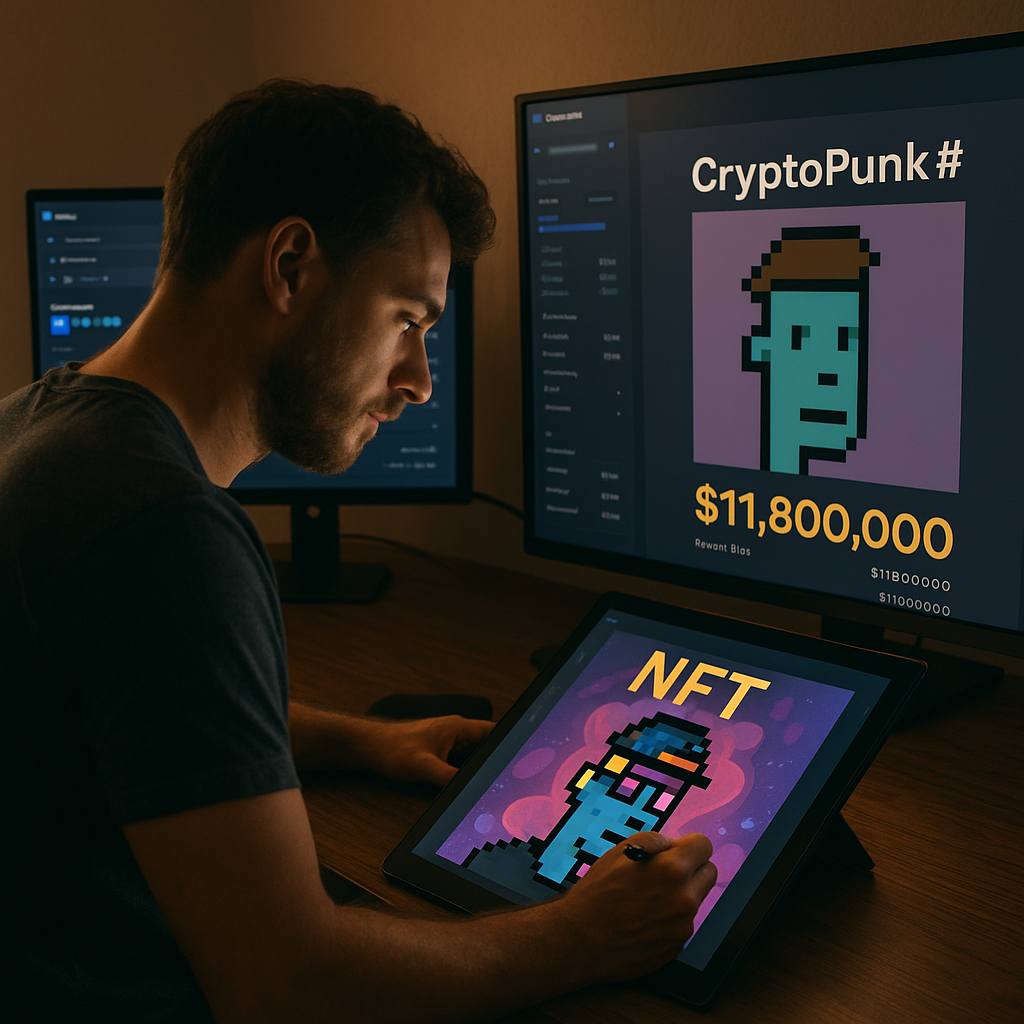NFT Market Booms in July 2021 with Record-Breaking Sales
The non-fungible token (NFT) market has exploded once again in July 2021, marking a new phase in the evolution of digital assets. With multimillion-dollar sales of digital art, collectibles, and virtual land, this month has brought unprecedented attention to NFTs. What’s fueling this renewed surge, and what does it mean for investors and creators?
A New Wave of Momentum
After a slight cooldown earlier in 2021, July saw the NFT space reignite in dramatic fashion. Major platforms like OpenSea, Rarible, and Foundation reported record daily volumes, while Ethereum gas fees surged, a direct consequence of increasing NFT activity.
A number of high-profile sales captured global headlines. Most notably:
-
A CryptoPunk NFT sold for $11.8 million at Sotheby’s.
-
An Axie Infinity plot of land went for $1.5 million, highlighting the booming virtual real estate market.
-
New releases from artists like FEWOCiOUS and Pak drew in millions within hours of launch.
These sales aren’t just anomalies. They reflect a deeper shift in how value is assigned in digital economies — and a growing willingness by investors to bet big on digital scarcity.
Why July? The Timing Behind the Surge
Several factors converged to drive the NFT market’s July boom:
-
Mainstream Institutional Attention
Sotheby’s and Christie’s continued to embrace NFTs, providing legitimacy to the space. Their involvement helped bridge the gap between traditional art collectors and blockchain-native assets. -
Celebrity and Brand Participation
July saw more A-list celebrities and global brands join the NFT movement. Names like Tom Brady, Ashton Kutcher, and Coca-Cola launched or teased NFT drops, attracting their massive followings into the ecosystem. -
Gaming + NFTs = Explosive Growth
Axie Infinity became the top-grossing blockchain game, earning over $23 million in a single week. Its play-to-earn model, combined with NFT ownership of in-game assets, is reshaping how users engage with games. -
Crypto Recovery and Confidence
After a rough June, the broader crypto market showed signs of recovery in July. Bitcoin rebounded above $32,000, restoring investor confidence and freeing up liquidity for speculative assets like NFTs.
Digital Ownership: More Than a Buzzword
The core value proposition of NFTs is verifiable digital ownership. While traditional images or files can be copied endlessly, NFTs allow a provably unique token to be linked to each asset, secured by blockchain.
This is changing how creators and consumers interact:
-
Artists can now monetize directly without intermediaries.
-
Collectors gain social status and investment potential.
-
Gamers truly own their in-game assets — and can trade or sell them across marketplaces.
The NFT model isn’t just about art — it’s becoming a new infrastructure for value online.
Risks and Concerns: Is This a Bubble?
As with any rapidly expanding market, there are warning signs.
-
Volatility: Prices fluctuate wildly. An NFT worth $100,000 today might be worth $10,000 next month.
-
Speculation: Many buyers are flipping NFTs purely for profit, with little regard for the underlying art or project.
-
Environmental Concerns: Ethereum’s proof-of-work model (at least until ETH 2.0 arrives) has drawn criticism for energy use.
-
Scams and Plagiarism: With money flooding in, malicious actors are exploiting hype to sell fake or stolen works.
Investors should approach the space cautiously, conducting due diligence and avoiding fear-of-missing-out (FOMO) traps.
Long-Term Potential: Beyond the Hype
Despite the risks, many believe NFTs are more than a passing trend. Several use cases show long-term potential:
-
Music Royalties: Artists can embed smart contracts into music NFTs, earning royalties on each resale.
-
Real Estate and Deeds: Tokenized property rights could streamline real-world asset ownership and transfer.
-
Identity and Credentials: NFTs may soon be used for academic degrees, memberships, or identity verification.
-
DAO Governance: Some decentralized organizations are experimenting with NFTs as voting shares or governance badges.
The infrastructure being built today — marketplaces, wallets, protocols — is likely to support future use cases we haven’t even imagined yet.
Investor Strategies: How to Navigate the NFT Market
For those looking to get involved, here are a few practical tips:
-
Start Small
Begin with affordable collectibles or utility-based NFTs to understand the market dynamics. -
Research the Project and Creator
Look for originality, community engagement, and roadmap longevity. -
Understand the Platform
Not all marketplaces are the same. OpenSea, Foundation, and Zora serve different communities and purposes. -
Watch Gas Fees
Ethereum fees can make small purchases costly. Consider Layer 2 solutions or chains like Tezos and Flow. -
Store Safely
Use hardware wallets when possible and avoid sharing private keys.
Like all investments, diversification and long-term thinking are key.
Conclusion: July 2021 Marks a Turning Point
The NFT market’s performance in July 2021 is not just a seasonal spike — it represents a broader transformation in how we define and exchange value online. As more creators, collectors, and companies join the space, the boundaries between digital and physical economies continue to blur.
NFTs are becoming more than just collectibles — they’re foundational to the next phase of the internet.
Whether this trend continues or corrects in the short term, one thing is clear: the NFT revolution is well underway.
